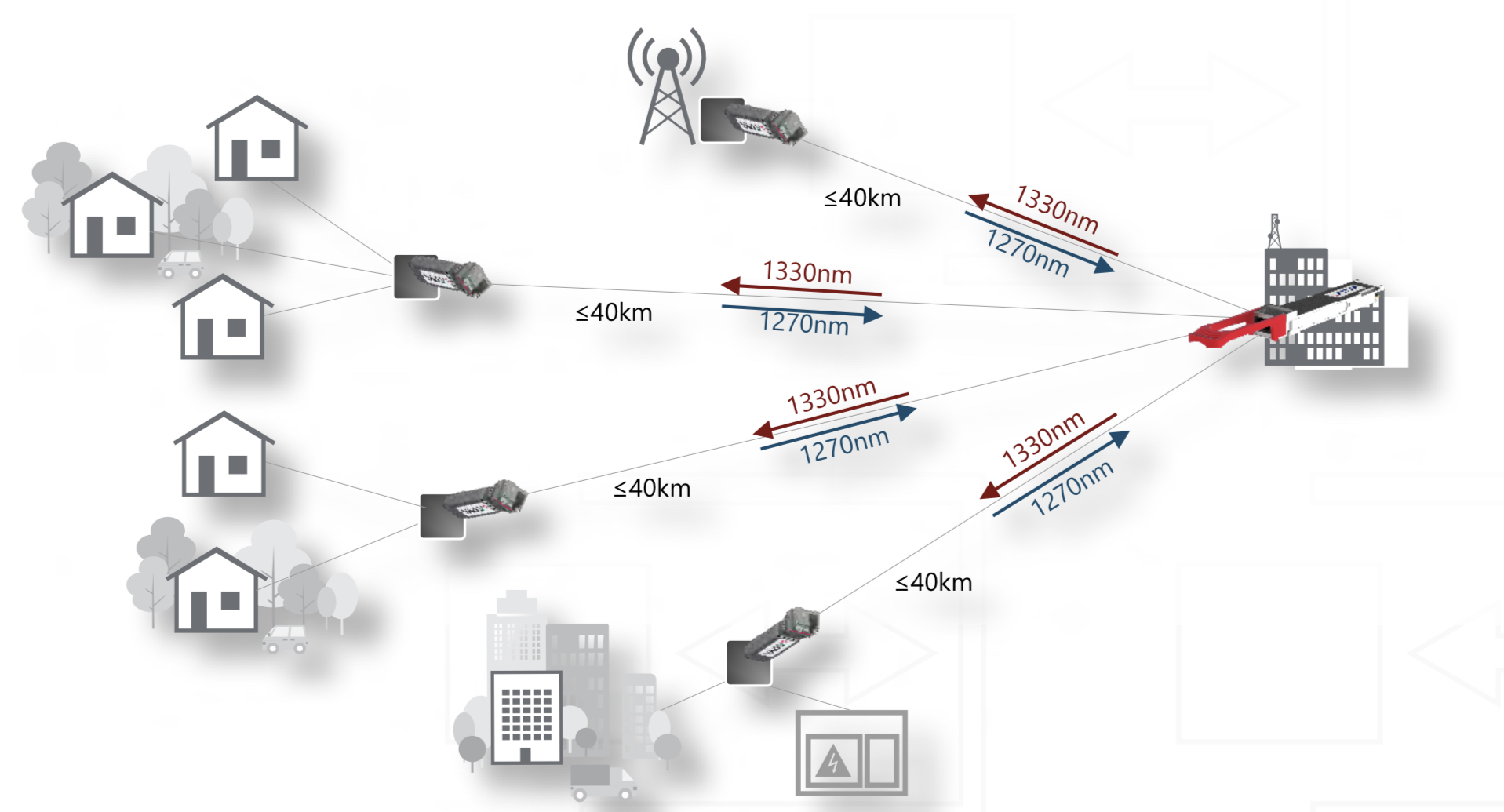ADVA Optical Engines adds bidirectional multiplexing
 Tuesday, April 12, 2022 at 9:47AM
Tuesday, April 12, 2022 at 9:47AM - ADVA expands its multiplexing modules to include the network edge
- The company is developing optical modules as part of a three-pillar business strategy
- ADVA’s merger with ADTRAN is approaching its conclusion
ADVA has expanded its family of multiplexing optical modules with a 40km bidirectional design for access networks.
 Saeid Aramideh
Saeid Aramideh
Until now, ADVA’s three multiplexer optical module products have focussed on IP routing and switching.
The multiplexing modules combine lower-speed optical interfaces into a higher-speed port.
The company unveiled its 4-by-10-gigabit MicroMux Edge BiDi, its first multiplexer module for the network edge, at the OFC show held in March in San Diego.
ADVA Optical Engines
As the capacity of switching and routing equipment increases, so does the speed of the electrical serialiser/ deserialiser (serdes) interface. What was at 10 gigabits is now at 50 and 100 gigabits. Yet legacy 1-gigabit and 10-gigabit streams remain.
“You need to find a way to support these legacy services while your network capacity goes up,” says Saeid Aramideh, vice president of business development at Optical Engines, ADVA. “So you need a multiplexing solution.”
Aramideh joined ADVA after working at firms CoreOptics, acquired by Cisco Systems in 2010, and then Ranovus. He mentions how, at an analyst presentation day, the CEO of ADVA, Brian Protiva, detailed three focus areas: entering non-telecom markets, software services, and becoming a more vertically integrated company.
“That includes differentiated products, products that don’t exist in the industry, based on ADVA’s IP (intellectual property),” says Aramideh.
The IP covers lasers, silicon photonics, software, and integration. ADVA aims to make industry solutions that customers can’t get elsewhere.
ADVA will also make products that do exist in the marketplace in order to ensure security of supply for its customers while enabling ADVA to reduce its product costs.
“That is the spirit of the business unit that we call ADVA Optical Engines,” says Aramideh.
MicroMux product family
The advantage of fitting the multiplexing within a module is that there is no need for additional networking equipment or a multiplexing line card.
“There is nothing as good as a module that does muxing because the solution has zero-footprint,” says Aramideh. “There is a network element already there; just plug the module in and do the muxing.”
ADVA’s first multiplexing module product is the MicroMux, a 10-by-10-gigabit QSFP28 optical interface feeding into a 100-gigabit port.
The MicroMux has multi-mode and 10km single-mode variants. “Over 10,000 units are in deployment with probably one of the largest IP router companies out there, carrying traffic in the network,” says Aramideh.
ADVA has also developed the MicroMux Nano, a 10-by-1-gigabit design in an SFP+ pluggable that supports single-mode and multi-mode fibre.
The MicroMux Quattro addresses 400 gigabits. Here, a QSFP-DD module multiplexes four 100-gigabit optical streams.
As well as the -SR4 interface, the Quattro multiplexes 100-gigabit CWDM-4 and LR4. “Those are the two categories that don’t exist in the marketplace, so the product is unique,” says Aramideh.
 Source: ADVA
Source: ADVA
MicroMux Edge BiDi
At OFC, ADVA announced its first access product, the 4-by-10-gigabit MicroMux Edge BiDi with a 40km reach, to address fixed and wireless traffic for consumers and enterprises.
One fibre sends and receives data in a bidirectional (BiDi) design. Data is transmitted using two wavelengths: 1270nm and 1330nm. Bidirectional communication benefits areas of the network where fibre is scarce.
The Micromux Edge Bidi supports four individual 10-gigabit optical channels multiplexed in the QSFP+ module, a single fibre carrying each stream.
An example application is sending 10-gigabit traffic between a wireless antenna site to a central office. “This is one connection on a single fibre, and four fibres are coming into the module,” says Aramideh.
Another benefit of using fibre for two-way communications is that latency is symmetrical.
This benefits applications where avoiding added latency is essential.
Mobile networks, especially in the fronthaul, need precise timing references for the radio heads for coordinated multi-point solutions. If the signals up and down travel on the same fiber, the dynamic delay variations are fewer. CIPRI fronthaul, for example, requires nanosecond accuracy and a single fibre is a solution of choice.
“As you start going into more enterprise applications, this becomes more and more important,” says Aramideh. “Some applications are susceptible to this.”
ADVA says one carrier customer for its edge multiplexer will start deployments this year.
Optical component innovation
The multiplexing products use ADVA’s vertical integration IP including laser and IC technologies.
ADVA has developed a multi-link gearbox chip based on OIF standards, for example, to enable aggregation of lower-speed data rates.
“We are working with a partner on the packaging capabilities to reduce that massive number of lasers and detectors into small form factors,” says Aramideh. “So there is a lot of innovation from an optical components perspective.”
ADTRAN merger
ADTRAN and ADVA announced their intention to merge in August last year.
Adtran’s shareholders have since approved the deal as have ADVA's.
The deal has also gained UK approval and now requires the same in Germany.
Α closing date will then be set.



Reader Comments